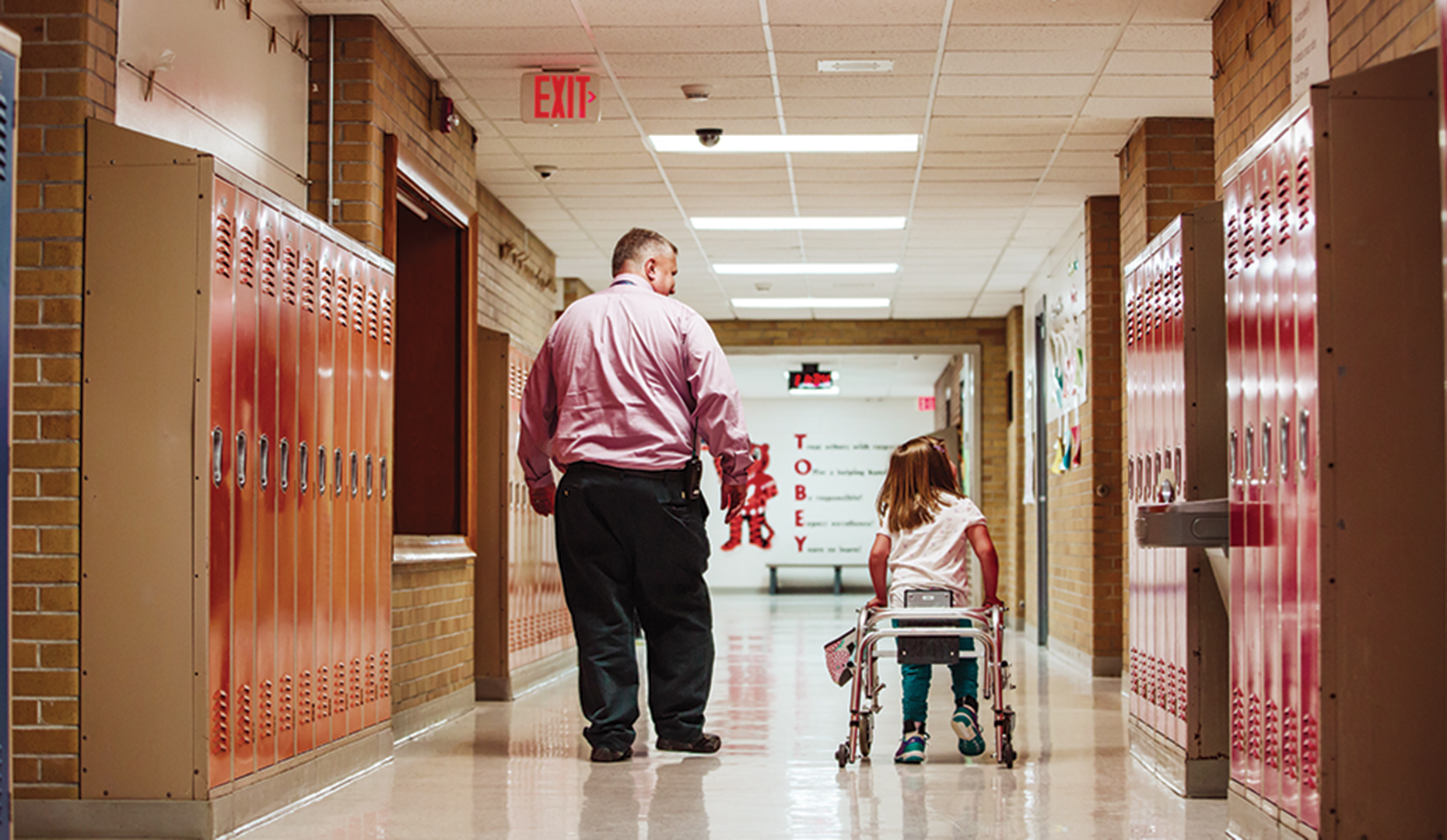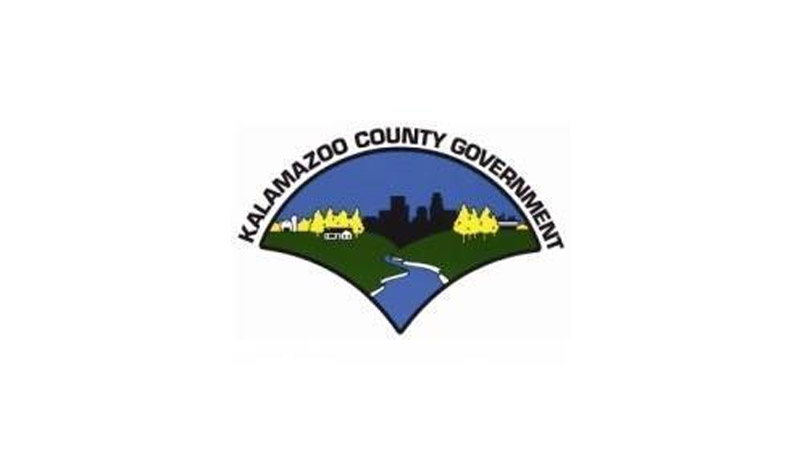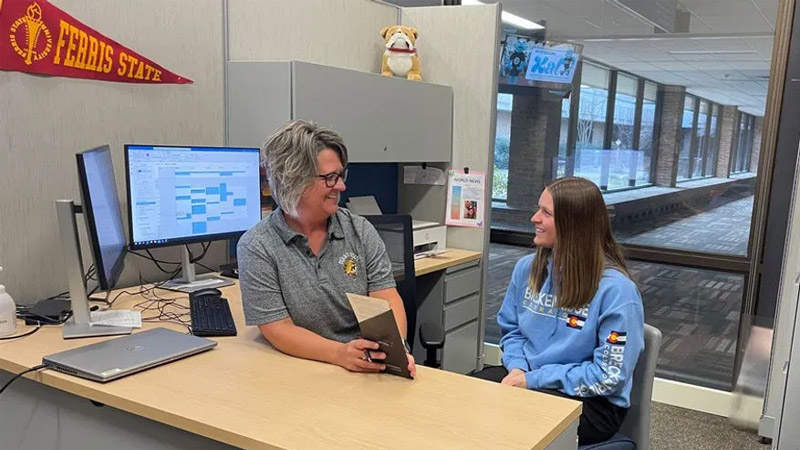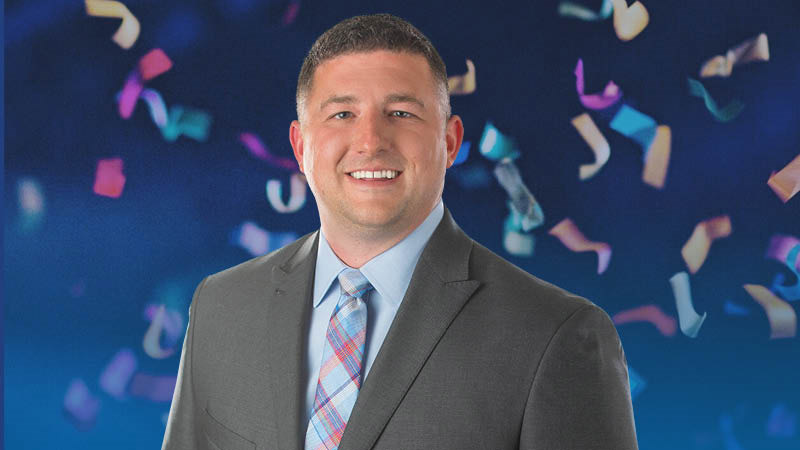The 2017 Catalyst Education Awards, sponsored by the Michigan Lottery, recognize educational excellence. We sat down with this year’s winners to see their commitment to education firsthand.
In these exciting times of astonishing access to technology and information, the traditional model of education has changed. The days of lecturing and rote memorization are over. Today’s schools are dynamic, filled with experimentation and active learning. Throughout the region, educators are dreaming up innovative methods to reach students. Teachers are bringing their lessons to life with virtual reality, hands-on experiences, and tailor-made curriculum, opening the minds of their students and getting real results.
Regional economic development organization Southwest Michigan First founded the Catalyst Education Awards with the mission of making Southwest Michigan recognized globally for its success in preparing young people to thrive in education and employment. According to Ron Kitchens, the organization’s chief executive officer, “Everyone can point to a single life-changing moment in their past that set them on their current path. And for many, this occurred in a classroom. We would like to celebrate the fact that across the region, these moments happen in our schools every day.”
The 2017 Catalyst Education Awards, sponsored by the Michigan Lottery, recognize educational excellence by honoring one elite school, principal, and teacher for their diligent and creative work to elevate student achievement. By implementing best practices in their classrooms and schools, they pave the way for the next generation of thinkers, engineers, artists, and leaders. Take out your number two pencils and read on to take note of the extraordinary successes of our region’s exemplary educators.
WINNING SCHOOL
Kalamazoo Regional Educational Services Agency Education for Employment | Kalamazoo County, MI
After learning the quadratic equation in Algebra class, or memorizing multisyllabic vocabulary words, many teachers can count on at least one student raising their hand to ask the age-old question, “When am I actually going to use this?” The answer that follows is an important one, but teens who have not yet explored possible career paths may be left feeling unconvinced.
Jason Luke, administrator of the Education for Employment (EFE) program for the Kalamazoo Regional Educational Service Agency (RESA), explains, “We want all of our young people to be lifelong learners and post-secondary ready. But I think part of the challenge is when kids don’t know what career they want to pursue. The magic bullet that they say to appease society is, ‘I’m going to college,’ but often their post-high school plans don’t get more specific than that.”
As a result, many undergraduate students change their major, often multiple times, delaying graduation. And when they do enter the workforce, graduates can struggle with unemployment or underemployment before finding a direction that is right for them.
Kalamazoo RESA aims to meet this challenge head-on with its EFE project, spearheaded by Luke. Kalamazoo RESA is one of Michigan’s 56 independent school districts that work with local school systems to provide special education, career readiness, and technology support to public, private, and home-schooled students within the county. EFE is one of Kalamazoo RESA’s many initiatives that offers real-world experiences not offered in a traditional school setting. The program’s goal is to help young adults, whether bound for college or the workforce after graduation, prepare for a career.
EFE gives students the opportunity to delve into different fields, expand their interests, and discover themselves. According to Luke, “EFE is specifically focused on helping kids find their passion through exploring multiple intelligences. Sometimes, traditional education doesn’t always draw that out talent with the usual English, Math, Science, and Social Studies classes. I think there is a misconception that career and tech-ed are separate from post-secondary education. It should be both. We need to open those opportunities to the next generation.”
To accomplish this, EFE offers tenth through twelfth-graders in Kalamazoo County the opportunity to regularly meet at schools, college campuses, and industry sites to take hands-on classes in everything from culinary arts to computer science. Over 3,500 students are currently enrolled and can choose from 181 courses in 38 areas of study.
Additionally, Kalamazoo RESA partners with local employers to recruit industry professionals with a passion for teaching to provide the most valuable learning experience possible. In Vicksburg High School, for instance, EFE’s automated manufacturing teacher has decades of experience as an engineer, while a Kalamazoo Public Safety Officer teaches a class of young adults attracted to law enforcement. Through EFE, high school students can explore their interests while potentially accumulating credits towards a college degree. As of 2017, 96 percent of EFE students graduate and already have the knowledge and experience to get a jumpstart in the job market.
Beyond specialized courses, EFE reaches young people of all grade levels through various projects and interventions. The program’s goal is to ensure that every student in the county has an opportunity to explore potential career paths each year. “It’s about getting to know yourself introspectively,” said Luke. “We try to connect with our business communities to give kids more insight than they would get sitting down to Google it or just not having a clue where to start.”
Luke believes that the earlier kids can start thinking about this, the better. That’s why EFE has launched an exciting initiative called MiCareerQuest Southwest—a gathering of 6,000 eighth and ninth-graders and hundreds of local business leaders that recently convened at the Kalamazoo Expo Center during the first two days of November 2017. Employers from four diverse industry areas set up interactive displays to quickly engage teens in some of the exciting things that they might do in an average day of work.
For one day, students can speak with industry experts and test-drive careers they may not have heard of, or previously thought to be out of reach. They can try brain surgery with Stryker tools, or join a pit crew to see if they can change a tire faster than a mechanic. They might pick up a hammer to work together shingling a roof, or take off piloting a virtual plane. “What we are really doing is speed-dating with different jobs,” said Luke.
Regardless of which booths they gravitate towards, going forward into high school, these young adults will have an idea of what fields interest them personally. Last year, 97.3 percent of student attendees polled felt that MiCareerQuest Southwest inspired them to think about their future. The lessons they learned helped them visualize themselves in the workplace, enabling a new generation to start formulating a path to lasting success.
“Unless we take direct measures and have some strategies in place to help young people with this career question, we are going to get a lot of the same results,” Luke said. “I think the number one piece is recognizing that all kids have value and we want to let them understand why they’re important, what their strengths are, and how they can be successful in life,” said Luke.
WINNING PRINCIPAL
Mike Barwegen | Tobey Elementary School; Vicksburg, MI
One autumn day in Vicksburg, Michigan, a fifth-grader at Tobey Elementary named Carcel Tharge walked into Principal Mike Barwegen’s office looking upset. His problem wasn’t a case of pink eye or a petition for extra recess time—he was concerned for another student.
A kindergartener named Hannah Cook, born with cerebral palsy, was new to the school that year. Though Cook is armed with a positive attitude and the determination to learn and play like every other student, Carcel noticed that she was having difficulty at recess.
Because Cook uses a walker and crutches, she was having trouble getting through the sand on the playground and couldn’t access the equipment alongside her friends and classmates. Instead, she spent her recess time in a small sandbox, far removed from the other children.
“Carcel approached me and said, ‘That’s just not right Mr. B; we have to do something for her,’” Barwegen remembered.
Hearing his concern, Barwegen asked Carcel to return with some friends so they could brainstorm solutions. Together with their principal, Carcel and a group of fifth graders used a green screen to film a short video and launched a GoFundMe webpage. They hoped to raise $20,000 to purchase a piece of equipment that every student at Tobey would be able to use.
“The kids did a ton of work. They went fundraising door-to-door. They were in a parade. They called companies. They were doing it all for Hannah and future kids. They were fifth-graders on their way out of the school. They knew it wasn’t for themselves,” said Barwegen, who was there to support his students every step of the way.
After months of effort, the school raised over $90,000—enough money to install three special pieces of equipment. “The kids redesigned the entire playground together in my office,” said Barwegen. “What impressed me was that one student had the idea of placing the new equipment in different parts of the playground so Hannah wouldn’t be stuck in a single area; they really wanted her to feel included. Hannah was absolutely thrilled when she saw it.”
This is just one of the principal’s many heartwarming stories of behaviors exhibited by the school’s students. “I am all for the kids,” he said. “When you create the environment that gives them that opportunity, they do incredible things.” Tobey students have raised money after natural disasters, started campaigns to support local food banks, and have worked tirelessly to improve their community. In one case, students, with the support and guidance of their principal, even spurred Governor Rick Snyder to officially recognize the month of October as “Dwarfism Awareness Month” in support of a fellow student.
For Barwegen, the environment he has created can be summed up by what he calls “The Tobey Way,” a school-wide value system he conceived to teach students about responsibility and integrity. “The Tobey Way goes for everyone here,” he said, “from the cafeteria workers to the teachers, to the janitor, to the students—everyone.”
As principal, Barwegen strives to live this code every day and leads bi-weekly assemblies when the whole school learns on one aspect of building good character at a time. For this school year, Barwegen has chosen to focus on a theme of “1.57” during these assemblies. This number refers to educational researcher John Hattie’s study of collective teacher efficacy. Hattie concluded that a teaching faculty’s ability to work together as a team is the number one factor influencing a student’s academic growth with an effect size of 1.57. This figure far outweighs other factors such as homework, parental involvement, and socio-economic status. Barwegen’s model has proven to be successful for his students, as schooldigger.com reports that in 2017, academic achievement at Tobey ranked above 90 percent of elementary schools in the state of Michigan.
If you visit Tobey Elementary, you will likely see “Mr. B,” as his students affectionately call him, sitting down and chatting with a group of first-graders at lunch, giving out high-fives as a line of kindergarteners pass by, or filling in for a teacher when substitutes are scarce.
Barwegen’s enthusiasm, compassion, and leadership have undoubtedly had an impact on every student who walks through the doors of Tobey Elementary. “When students leave this school, they know how to treat others,” he reflected. “When I go to the middle or high school, teachers tell me that they can pick out the kids that went to Tobey, just because the way they treat other people.”
WINNING TEACHER
Amy Cummings | Dowagiac Middle School; Dowagiac, MI
When Amy Cummings poses a question to a class of eighth grade Earth science students, eager hands shoot up all around the room. “I love to have class discussions,” Cummings said. “On a Monday morning, it’s my job to keep the energy up. I hate silence.”
As any teacher or parent can attest, keeping a middle schooler’s attention is no easy task, but Cummings is more than able to meet the challenge. Her biggest allies in the classroom are her dedication to her students and her passion for all things science. “I’m a full-blown science geek,” said Cummings. “My family will make fun of me because that’s all I talk about. But the kids love it. They see me and think its okay to love a subject.”
Cummings brings that passion to every assignment, hand-crafting each worksheet, PowerPoint, and project to meet a classroom full of different learning styles. “I have never once taught out a book—I create everything myself,” she said. “I spend hours and hours.” Cumming’s inexhaustible energy sparks an excitement for learning in her students, many of whom stay in contact with her long after the year ends.
With Cummings at the helm, eighth-graders know to prepare for the many thrilling activities that she has planned throughout the year. Classmates cheer as an earthquake shake-table demolishes miniature structures, or when their team gains a point in a competitive game of review Jeopardy. Some days they come to class and get their fingers sticky creating delicious graham-cracker models of plate tectonics, while others log on to their class Chromebooks to analyze hurricanes and other natural events in real time.
To connect with her middle schoolers, Cummings often injects personal stories and pictures from scientific field studies she has participated in across the country. But to take students on an expedition along with her, she turns to technology. Cummings, Dowagiac Middle School’s science chair, has been able to purchase virtual reality goggles for the school, enabling her classes to go on cyber field trips. From the comfort of the classroom, she uses her iPad to lead her students on expeditions to Kilauea volcano in Hawaii, Mount Everest, and even the moon!
Cumming’s hard work and creativity not only makes her class more entertaining but also has a measurable impact on her student’s learning. This past year, before her classes began their study of plate tectonics, Cummings give her students a pre-test to assess their baseline knowledge. Without any classroom instruction, the average score was 38.36 percent. At the end of the unit, students were to retake the test to measure their learning growth. Cumming’s goal was for 80 percent of her eighth-graders to get at least an 80 percent on the post-test, or to increase their pre-test score by 50 percent. After weeks of learning, experimenting, and asking questions, 97.6 percent of her students met or exceeded that goal.
More than anything, Cummings cherishes the chance to instill a love of learning in her young students and show them that science can be fun. “There have been class periods where my cheeks hurt from laughing so hard,” she said. “I love to look out at a room full of smiles.”
To Cummings, teaching is more than just a career, and sharing her joy is the best part of the job—a theme shared by all 2018 Catalyst Education Award winners.




